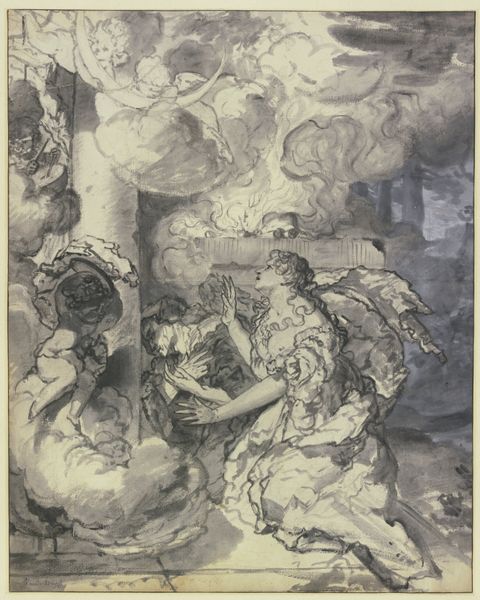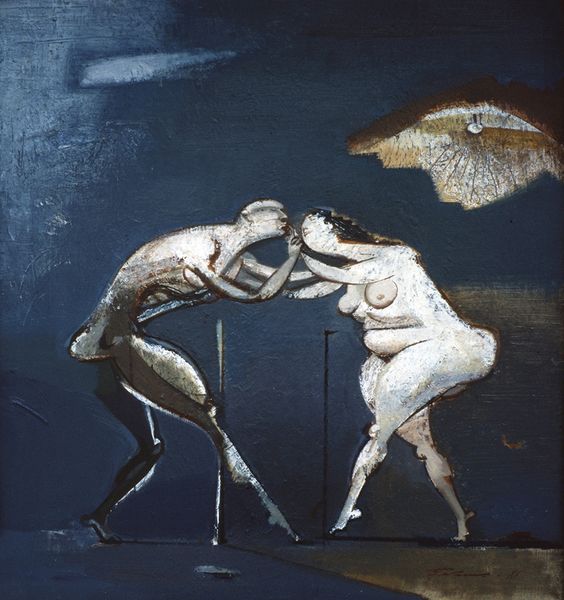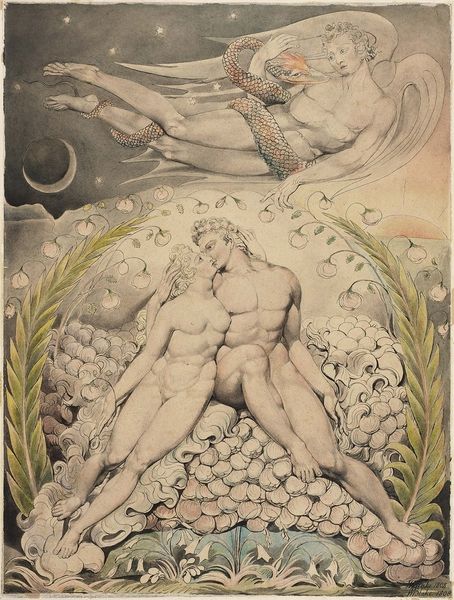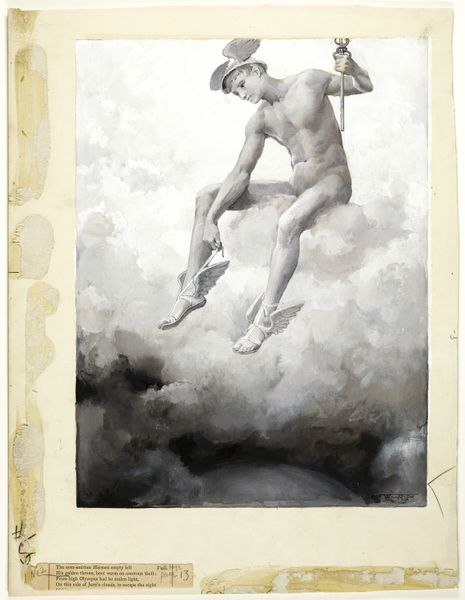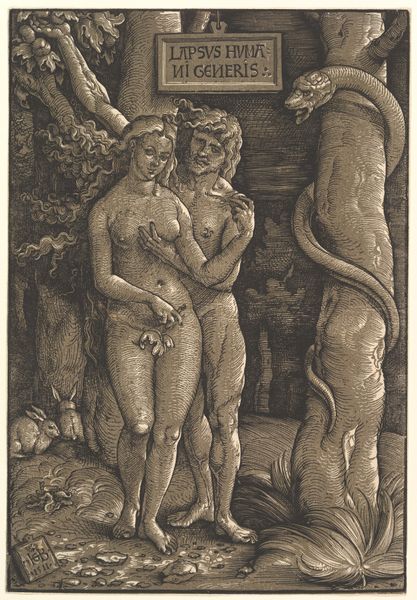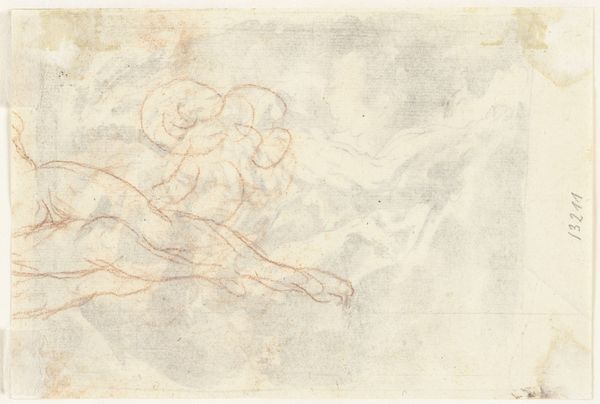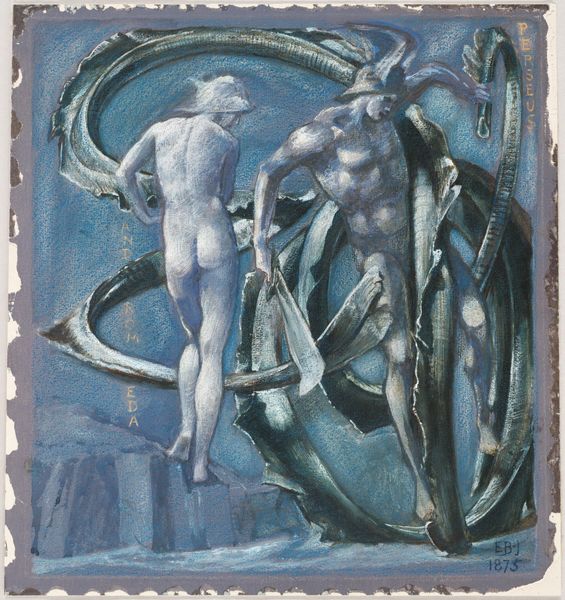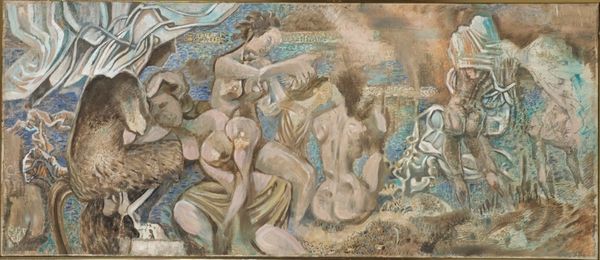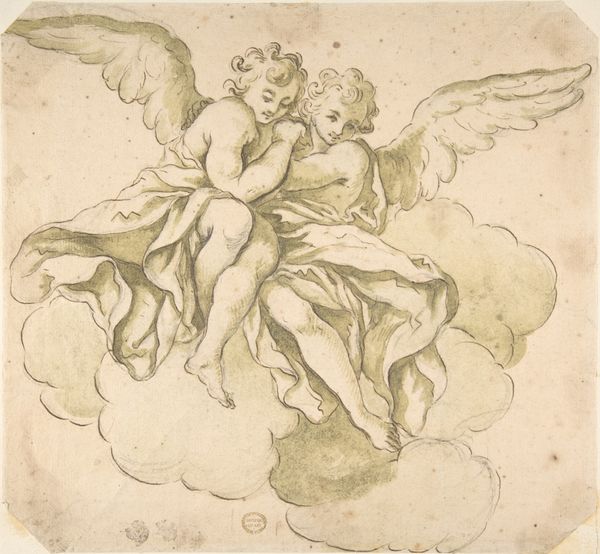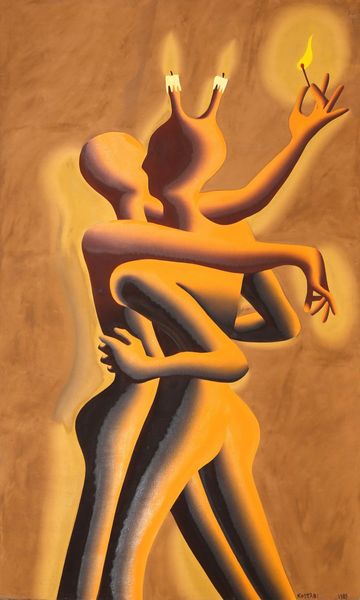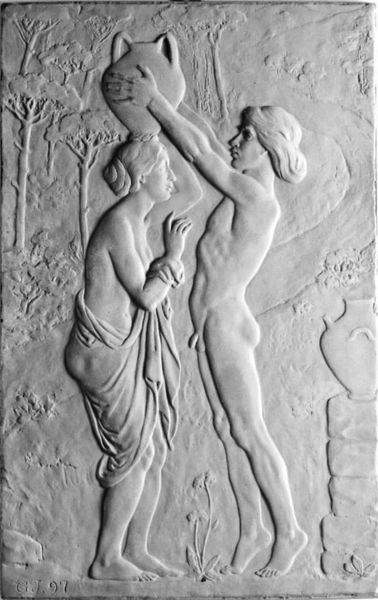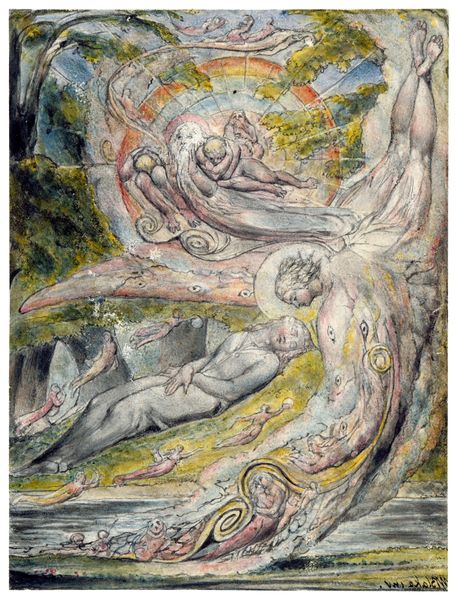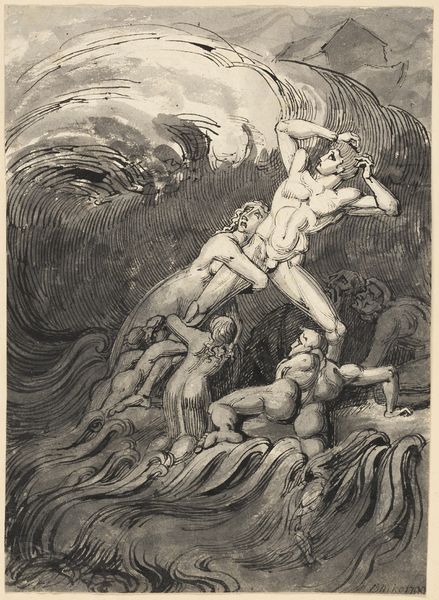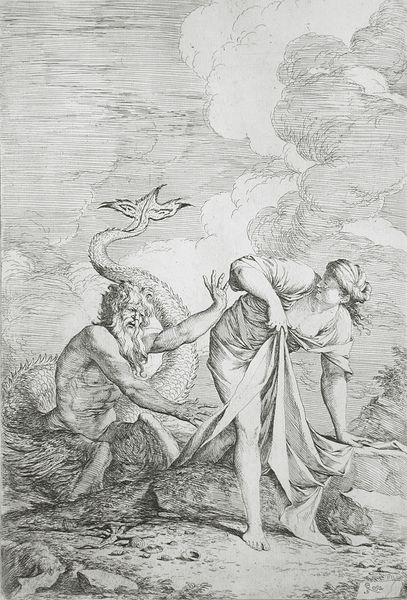
carving, sculpture, enamel
#
carving
#
allegory
#
sculpture
#
mannerism
#
figuration
#
sculpture
#
enamel
#
naive art
#
carved
#
history-painting
#
decorative-art
Dimensions: overall: 7.6 x 9.3 cm (3 x 3 11/16 in.)
Copyright: National Gallery of Art: CC0 1.0
Curator: Here we have a mid-16th-century enamel plaque by Pierre Reymond, depicting the myth of Ixion. Editor: Well, it's... striking! Immediately, I'm drawn to the contrasts – the black starry background against the cloudscape. There’s something almost dreamlike, yet also unsettling. Curator: Reymond was a master of Limoges enamel, and here he presents a very Mannerist take on the classical tale of Ixion, a king who dared to lust after Hera and was punished by Zeus. The story goes that Zeus created a cloud in Hera's likeness and when Ixion attempted to embrace it, he was forever damned for his transgression. Editor: So, the figures… that cloud-Hera, really… it feels charged with erotic energy and subsequent despair. There's something vulnerable about that stark rendering, the bare bodies against the abstract cosmos of dots. It evokes a tangible sense of violation and a very human tragedy. The naivety apparent in rendering celestial space feels at odds with the sophisticated rendering of human form, making for quite an arresting dichotomy. Curator: I see your point about vulnerability. Consider how the cloud figure is not fully human, more a fabrication and reflection of desire, perhaps commenting on illusion versus reality? Also, I wonder if the contrast isn’t more directly about that celestial order versus earthly transgression, each with its visual and thematic space. The gold highlights, for instance, emphasizing a fractured opulence. Editor: Interesting. For me, it all loops back to this pervading sense of drama—an allegory writ small, yet potent. It’s technically skilled but somehow, it’s also a very emotionally direct scream. I wonder how much that expressiveness and human drama was considered “decorative art” and "craft" instead of just "art," for the very reason of being enamel, carving, and a plaque. Curator: Well, seeing Reymond's mastery through your impassioned eyes really offers a potent view. Perhaps his intimate scale adds a vital whisper to such a booming story. Editor: Exactly! It all boils down to Reymond making the cosmic intensely human—even if tragic!
Comments
No comments
Be the first to comment and join the conversation on the ultimate creative platform.
